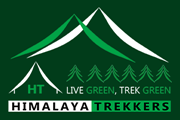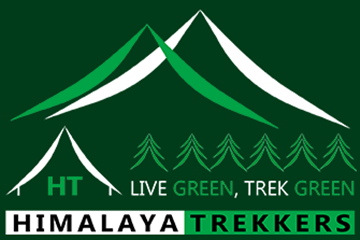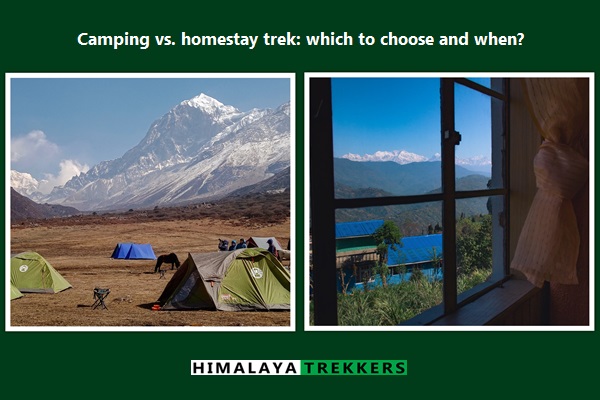Is it better to go on a camping trek rather than a homestay trek? Would you rather choose a path with homestay or lodge accommodations, or would you prefer to camp?
First of all, as these two are distinguished by their unique characteristics. Ideally, you should try both to get separate, distinct flavours instead of sticking to one forever!
Also understand that the following points are general or gross in nature with overlapping areas or sets. Unfortunately Indian Himalayas have a limited choice of already established homestay or tea house based treks. However, we constantly try to find or create meaningful new homestay trails in the Himalayas.
Now let us understand the basics, pros, and cons so that one may fit better for you in a given set of condition(s).
Camping treks:
In this type, the main characteristics are:
- Camping Setup: Here we stay in tents that are set up at designated campsites or areas along the trekking route.
- Self-Sufficiency: As you carry your own camping equipment and food supplies, so making the trek a more self-sufficient and immersive experience.
- Remote Locations: Usually more remote and less developed areas, providing a wilderness experience far away from civilisation.
- Flexibility: The trek itinerary can be flexible as there is no dependency on available accommodations en route.
Advantages:
- Isolation and Freedom: Camping treks offer a more secluded and immersive experience in nature, away from more frequented or crowded tourist areas.
- Customisation: One can customise itineraries to explore specific areas, and trekkers have more control over the pace of the trek.
- Wildlife and Nature: The chance to observe wildlife and experience nature in its raw form is often higher.
- Wide range of routes: You can select from popular or lesser known many trails stretching the Himalayas.
Drawbacks:
- Demanding logistics and planning: Participants need to carry more gear and supplies, requires logistic knowledge or using the help of a professional tour operator.
- Lack of Comfort: Camping may not be as comfortable as staying in lodges, especially in challenging weather conditions.
- Environmental Impact: If not managed responsibly, camping can have a higher environmental impact compared to using established accommodations.
- More resources for small groups: Heavy initial logistics and thus may not be budget-friendly when your group size is small.
Homestay and Tea House Treks:
Main characteristics are:
- Local Accommodations: You stay in local homes or tea houses along the trek, using established lodging facilities.
- Community Interaction: Provides opportunities to interact with local communities, learn about their culture and food, experience the hospitality of the region.
- Proximity to the civilisation: Trails don’t go far or interior in the mountains and remains attached to the villages and settlements.
Advantages:
- Comfort: Tea houses and homestays provide more comfort compared to camping. Trekkers can enjoy a bed, warm meals, and socializing in common areas.
- Cultural Experience: Interacting with local communities enhances the cultural experience, allowing trekkers to learn about the traditions and lifestyles of the region.
- Logistical Ease: Trekkers don’t need to carry heavy camping equipment, making the trek more accessible for a wider range of people.
- Physically less demanding:
Drawbacks:
- Crowds: Popular trekking routes with tea houses may attract more trekkers, resulting in crowded accommodations.
- Proximity to civilisation: The experience may be less secluded and less immersed in nature due to the proximity to established communities.
- Less Flexibility: Itineraries may be more fixed, with limited options to deviate from the established path.
- Limited choice of routes:
Key takeaway:
- Camping treks require carrying all your own gear and setting up camp each night, while homestays and tea houses provide basic lodging and meals.
- Camping is more immersive in nature and requires more self-sufficiency, whereas homestays or tea houses offer more comfort and convenience.
- As camping treks are often logistically demanding, so small group size results in more overhead cost. Whereas homestay treks are more suitable for small group of friends or families.
So in summary, camping treks appeal more to the adventurous seeking solitude and connection to nature, while homestay or tea house treks offer convenience and cultural immersion with less gear or logistics burden. Choosing between them depends on budgets, outdoor experience level, and preferences in your travel style.








Comments